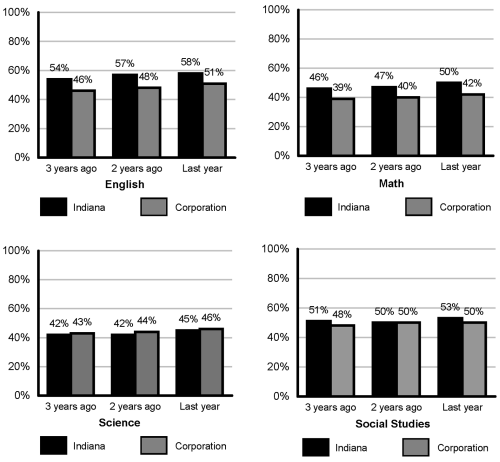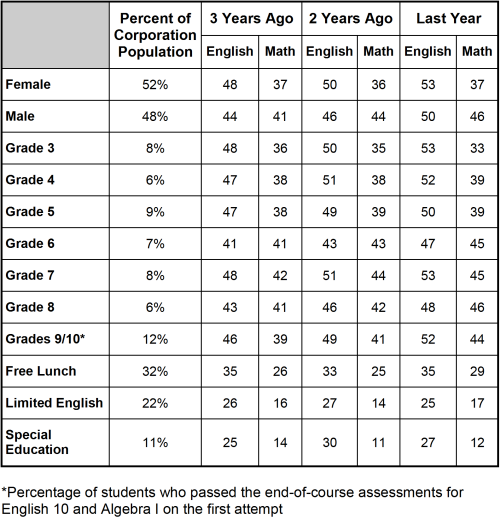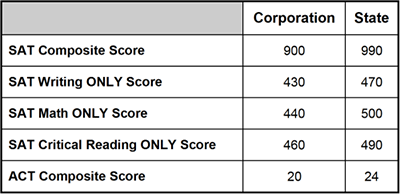Study Guide
Field 040: School Administrator—District Level
Sample Constructed-Response Assignment
The following materials contain:
- Directions for the constructed-response assignment
- A sample constructed-response assignment
- An example of a strong response to the assignment
- The performance characteristics and scoring scale
Directions for the Constructed-Response Assignment
This section of the test consists of one constructed-response assignment in which you will be asked to respond to an assignment presented on-screen. You should prepare a response of approximately 500–800 words. You may use the word-count feature in the lower left-corner of the response box to monitor the length of your response. You will not be allowed to type more than 1000 words.
Read the assignment carefully and think about how you will organize your response before you begin to type.
Your response will be evaluated on the following criteria:
- Purpose: The extent to which the response achieves the purpose of the assignment.
- Subject Matter Knowledge: The accuracy and appropriateness in the application of subject matter knowledge.
- Support: The quality and relevance of supporting details.
- Rationale: The soundness of argument and degree of understanding of the subject matter.
Be sure to write about the assigned topic. You may not use any reference materials. Your response must be your original work, written in your own words, and not copied or paraphrased from some other work. Remember to review what you have written to ensure that you address all aspects of the assignment and make any changes you think will improve your response. The final version of your response should conform to the conventions of edited American English.
Sample Constructed-Response Assignment
School Corporation Data Assignment
Use the data to complete the task that follows.
You were recently appointed superintendent of Colgate School Corporation. You currently work in another region of the state, so your knowledge of the corporation and the local community is limited. Before you arrive in Colgate, a member of the central office staff sends you some information about the corporation, including data derived from Colgate's most recent school report card.
Write an analysis of 500–800 words in which you analyze the data provided. In your analysis:
- identify two important corporation issues and/or needs suggested by the data, and explain the significance of each.
For one of the issues/needs you identified:
- describe two approaches you would use to learn more about the nature or cause(s) of that issue/need, and explain why each of these approaches would be useful;
- describe two strategies you and/or your staff should include in a plan to address the identified issue/need; and
- explain why each strategy you described would be effective in helping address the identified issue/need.
Student Performance Indicators for Colgate School Corporation (Grades K–12)
Standardized Assessment Results for All Students
Three-Year ComparisonThe graphs below display the percentage of students who passed the state assessments in all groups.
Student Performance Indicators for Colgate School Corporation (Grades K–12)
Standardized Assessment Results by Student Group
Three-Year ComparisonThe table below displays the percentage of students who passed the state assessments by group.
Student Performance Indicators for Colgate School Corporation (Grades K–12)
Student Growth Model (English)
% of lowest performing students with high growth:............38%
Target is ≥ 43%
% of highest performing students with high growth:...........31%
Target is ≥ 37%
% of ALL students with low growth:..................................42%
Target is < 40%
Student Growth Model (Math)
% of lowest performing students with high growth:............36%
Target is ≥ 45%
% of highest performing students with high growth:...........32%
Target is ≥ 38%
% of ALL students with low growth:..................................47%
Target is < 40%
Attendance and Graduation Rates Last Year
Advanced Programs Last Year
During the last school year, 10.9% of all high school graduates in Colgate Corporation passed an advanced placement (AP) exam.
During the last school year, 12.5% of all high school graduates in Indiana passed an advanced placement (AP) exam.
SAT and ACT Scores Last Year
Sample Strong Response to the Constructed-Response Assignment
Based on the student performance data provided, two issues I would investigate as the new superintendent of Colgate School Corporation involve: 1. the district's failure to meet any of its student growth targets, and 2. declining math scores on the state assessment for third graders.
The state's growth model measures each student's academic growth against the growth of peers with similar academic histories. Growth model data indicate the extent to which teachers are successfully promoting growth for all students in their classes. The data for my new district indicate that neither low-performing students nor high-performing students are progressing academically at desired levels in English or math, while too many students are exhibiting low academic growth. In other words, teachers are not doing enough to drive the academic growth of all of their students.
Declining third-grade math scores are another problem area I would consider a priority. While every other grade level in the district has been making slow but steady gains in math over the last three years, math scores for third grade show a noticeable decline. Math is widely understood to be a subject area of great importance in school and in life, so it is crucial that students in the early grades gain a strong foundation in math that can serve as a springboard for future learning and success. Curricular or instructional issues that impede math learning for young students should be a priority issue for educators.
Regarding low and declining third-grade math scores, I would include the following two approaches in my efforts to learn more about the nature and causes of the issue. First, I would meet with all of the elementary school principals in the district to collaboratively review and analyze current math performance data for third graders across the district. A primary goal here would be to identify areas of particular weakness in third-grade math achievement for the district or for particular schools within the district. This would help the principals target specific areas in third-grade math where curriculum and instruction need to be further investigated and improved. The process of collaborative review and analysis would also help promote principals' recognition of the problem and the need to address it.
A second approach I would use would be to have the principals review the math lesson plans and objectives of their third-grade teachers. Reviewing lesson plans would provide information on how teachers are structuring their lessons, what content is being taught, and what methodologies are being employed to promote student learning. This approach would provide insight into teachers' instructional priorities for math, how they are addressing math content, and whether there are gaps in the content they are teaching or problems in the methods they are using.
A plan to address my district's third-grade math issue would include the following two strategies. First, I would have the elementary principals organize meetings with the third-grade teachers in their school in which the teachers analyze the math curriculum they are teaching in light of their students' standardized test performance. These meetings should focus on identifying areas of particular student need in math, as reflected in assessment results, and determining whether the math curriculum being taught is adequate and appropriate in these targeted areas. This strategy would help staff identify content that is either not addressed or inadequately addressed in the current curriculum and would provide information needed to improve alignment between what is taught and what is tested. Bringing teachers together in this way would also create a context for teachers to begin a process of collaborative reflection, discussion, and inquiry aimed at problem solving around the issue of improving their students' math performance.
A second strategy I would include in a plan to address the third-grade math issue would be to have elementary principals schedule observations of math lessons in all third-grade regular education and special education classrooms and other math support contexts for students at the third-grade level. Observing math lessons would provide first-hand data on teachers' instructional practices and the ability of each teacher's students to engage in and benefit from the instruction provided. Information obtained through these observations would help in identifying those third-grade teachers who require closer supervision and/or coaching to meet the instructional needs of their students in math.
As superintendent, I would meet regularly with the elementary principals and possibly other school staff to review and monitor progress in implementing the identified strategies for improvement. At the same time, I would encourage a high level of collaboration and the development of a professional learning community focused on continuous improvement in math teaching and learning.
Performance Characteristics for the Constructed-Response Assignment
| Purpose | Extent to which the response achieves the purpose of the assignment |
|---|---|
| Subject Matter Knowledge | Accuracy and appropriateness in the application of subject matter knowledge |
| Support | Quality and relevance of supporting details |
| Rationale | Soundness of argument and degree of understanding of the subject matter |
Scoring Scale for the Constructed-Response Assignment
| Score Point | Score Point Description |
|---|---|
| 4 |
The "4" response reflects a thorough knowledge and understanding of the subject matter.
|
| 3 | The "3" response reflects a general knowledge and understanding of the subject matter.
|
| 2 | The "2" response reflects a limited knowledge and understanding of the subject matter.
|
| 1 | The "1" response reflects a weak knowledge and understanding of the subject matter.
|
| U | The response is unrelated to the assigned topic, illegible, primarily in a language other than English, not of sufficient length to score, or merely a repetition of the assignment. |
| B | There is no response to the assignment. |




